

Howard Street was in the Liberty of the Savoy between Westminster and the City of London; it ran from Surrey Street in the west to Arundel Street in the east, and was crossed only by Norfolk Street. It was demolished in the 1970s.


Howard Street was in the Liberty of the Savoy between Westminster and the City of London; it ran from Surrey Street in the west to Arundel Street in the east, and was crossed only by Norfolk Street. It was demolished in the 1970s.
It was built on land once occupied by Arundel House and its gardens, the property of the Howard family, Dukes of Norfolk. [1] Howard Street and its neighbouring streets, Arundel, Norfolk, and Surrey, were all built after Arundel House was demolished by the earl of Arundel in 1678. [2]
Howard and Norfolk Streets were demolished in the 1970s to build Arundel Great Court [3] – taken over by another building in 2012. [4] [5] A major replacement is a campus of King's College London.

Duke of Norfolk is a title in the peerage of England, and is the premier non-royal peerage. The seat of the Duke of Norfolk is Arundel Castle in Sussex, although the title refers to the county of Norfolk. The current duke is Edward Fitzalan-Howard, 18th Duke of Norfolk. The dukes have historically been Catholic, a state of affairs known as recusancy in England.

Chinatown is an ethnic enclave in the City of Westminster, London, bordering Soho to its north and west, Theatreland to the south and east. The enclave currently occupies the area in and around Gerrard Street. It contains a number of Chinese restaurants, bakeries, supermarkets, souvenir shops, and other Chinese-run businesses. The first Chinatown was located in Limehouse in the East End.

The Strand is a major street in the City of Westminster, Central London. The street, which is part of London's West End theatreland, runs just over 3⁄4 mile (1.2 km) from Trafalgar Square eastwards to Temple Bar, where it becomes Fleet Street in the City of London, and is part of the A4, a main road running west from inner London.
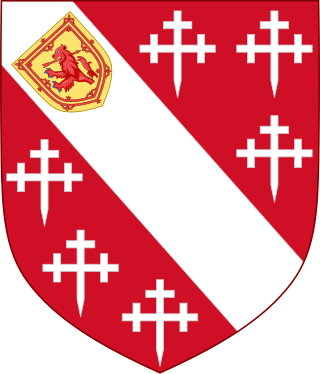
The Howard family is an English noble family founded by John Howard, who was created Duke of Norfolk by King Richard III of England in 1483. However, John was also the eldest grandson of the 1st Duke of the first creation. The Howards have been part of the peerage since the 15th century and remain both the Premier Dukes and Earls of the Realm in the Peerage of England, acting as Earl Marshal of England. After the English Reformation, many Howards remained steadfast in their Catholic faith as the most high-profile recusant family; two members, Philip Howard, 13th Earl of Arundel, and William Howard, 1st Viscount Stafford, are regarded as martyrs: a saint and a blessed respectively.

Edward William Fitzalan-Howard, 18th Duke of Norfolk,, styled Earl of Arundel between 1975 and 2002, is a British peer who holds the hereditary office of Earl Marshal and, as Duke of Norfolk, is the most senior peer in the peerage of England. He is also the titular head of the House of Howard.

Great Marlborough Street is a thoroughfare in Soho, Central London. It runs east of Regent Street past Carnaby Street towards Noel Street.
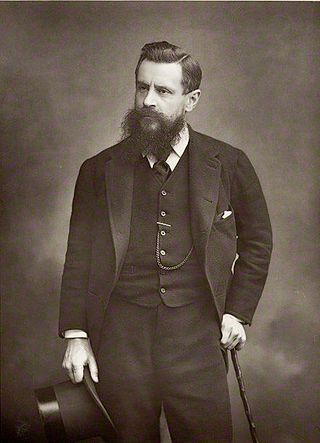
Henry Fitzalan-Howard, 15th Duke of Norfolk,, styled Lord Maltravers until 1856 and Earl of Arundel and Surrey between 1856 and 1860, was a British Unionist politician and philanthropist. He served as Postmaster General between 1895 and 1900, but is best remembered for his philanthropic work, which concentrated on Roman Catholic causes and the city of Sheffield.
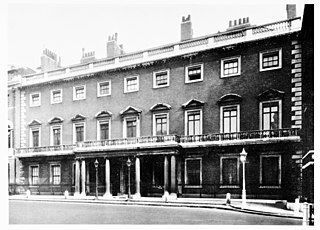
Norfolk House was the London residence of the Howard family headed by the Dukes of Norfolk, and as such more than one building has been given this name. The first was opposite Lambeth Palace, set in acres of garden and orchards on a site occupying what is now the Novotel London Waterloo on Lambeth Road.

Deepdene was an estate and country house occupying land to the southeast of Dorking, Surrey, England. The remains of the gardens are Grade II* listed with the adjoining Chart Park on the Register of Historic Parks and Gardens.

Arundel House was a London town-house located between the Strand and the River Thames, near the Church of St Clement Danes.
Robert Abraham (1773–1850) was an English building surveyor and later architect in London. He was the son of a builder and was educated as a surveyor as a pupil of James Bowen. He turned to architecture after 1818, and was chiefly employed by the leading Roman Catholic families in England, including the Duke of Norfolk and the Earl of Shrewsbury.

The Strand Campus is the founding campus of King's College London and is located on the Strand in the City of Westminster, adjacent to Somerset House and continuing its frontage along the River Thames. The original campus comprises the Grade I listed King's Building of 1831 designed by Sir Robert Smirke, and the college chapel, redesigned in 1864 by Sir George Gilbert Scott with the subsequent purchase of much of adjacent Surrey Street since the Second World War and the 1972 Strand Building. The Macadam Building of 1975 previously housed the Strand Campus Students' Union and is named after King's alumnus Sir Ivison Macadam, first President of the National Union of Students.

In British usage, the term townhouse originally referred to the opulent town or city residence of a member of the nobility or gentry, as opposed to their country seat, generally known as a country house or, colloquially, for the larger ones, stately home. The grandest of the London townhouses were stand-alone buildings, but many were terraced buildings.

St Edmund's Church is the Roman Catholic parish church of Godalming, a town in the English county of Surrey. It was built in 1906 to the design of Frederick Walters and is a Grade II listed building. The church stands on a "dramatic hillside site" on the corner of Croft Road just off Flambard Way close to the centre of the town.

Temple Place is a street in the City of Westminster that runs parallel with Victoria Embankment along the River Thames. The name of the street refers to the Knights Templar who once lived in the Temple area of London.
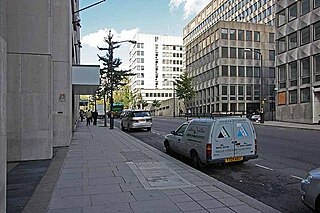
Arundel Street is a street in the City of Westminster, London, that runs from Strand in the north to Temple Place in the south. It is on land once occupied by Arundel House and its gardens.
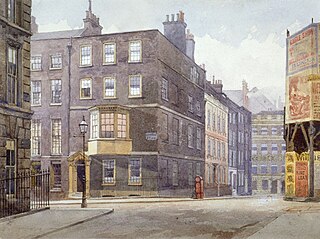
Norfolk Street in the Liberty of the Savoy ran from Strand in the north to the Westminster reach of the Thames. It then ran to a strand of public gardens after the Victoria Embankment was built (1865–70), what is now Temple Place. It was crossed only by Howard Street. It was demolished in the 1970s.
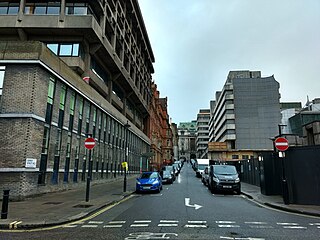
Surrey Street in the City of Westminster, London, runs from Strand in the north to Temple Place in the south. It was built on land once occupied by Arundel House and its gardens.

Leicester House was a large aristocratic townhouse in Westminster, London, to the north of where Leicester Square now is. Built by the Earl of Leicester and completed in 1635, it was later occupied by Elizabeth Stuart, a British princess and former Queen of Bohemia, and in the 1700s by the two successive Hanoverian princes of Wales.
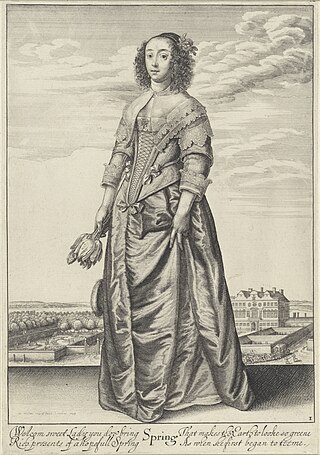
Tart Hall or Tart House was a small villa in the City of Westminster, London in the 17th century into the early 18th century. The building stood on the west side of James Street, now Buckingham Gate, immediately to the south of Buckingham House, now Buckingham Palace, at the west end of St James's Park. The origin of its name is not clear.
![]() Media related to Howard Street, London at Wikimedia Commons
Media related to Howard Street, London at Wikimedia Commons